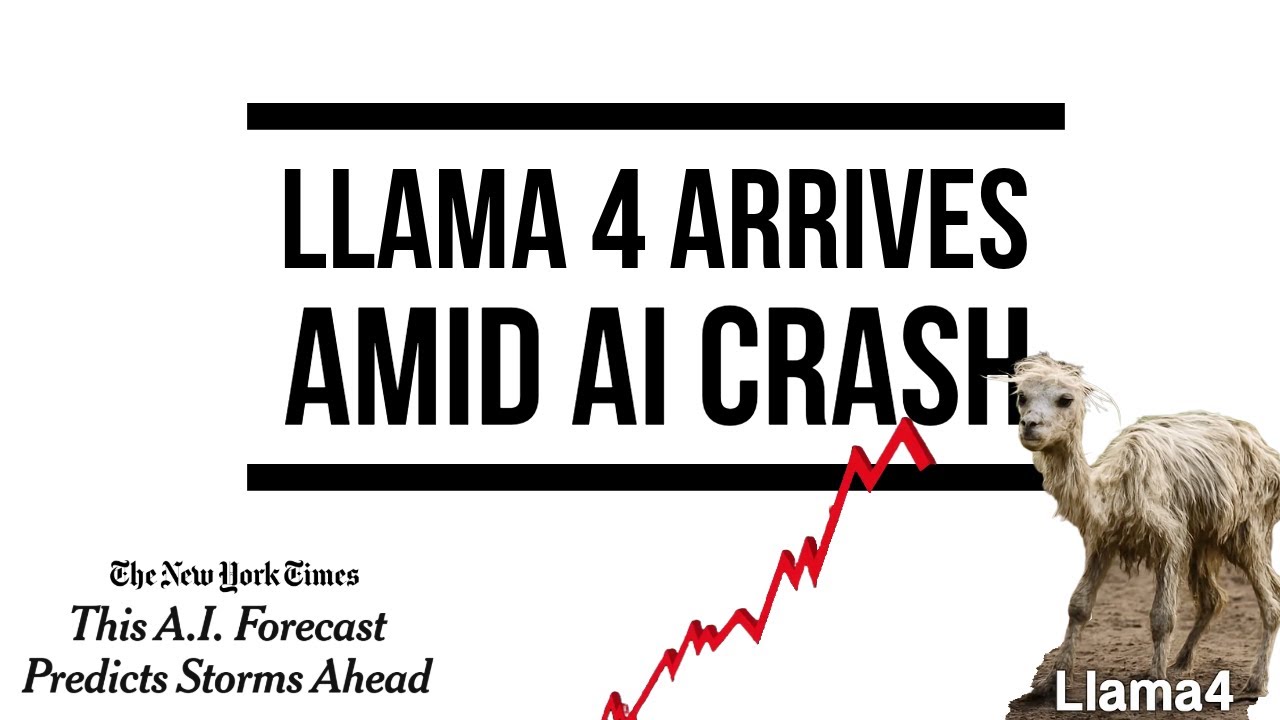The video analyzes the current state of AI, focusing on the release of Llama 4 and predictions of superintelligence by 2027, while highlighting concerns from Anthropic’s CEO about potential disruptions to AI progress due to economic factors like a stock market crash. It critiques the performance of Llama 4 compared to competitors and expresses skepticism about the feasibility of rapid advancements in AI, emphasizing the complexities and challenges that remain in the field.
The video discusses the current state of AI, focusing on recent claims and developments, particularly around the release of Llama 4 and predictions of superintelligence by 2027. The host aims to debunk sensational headlines and provide a clearer understanding of the situation. They highlight concerns raised by Dario Amhedday, CEO of Anthropic, regarding potential disruptions to AI progress, including a stock market crash that could hinder funding for AI companies, which rely on investor confidence to finance their operations.
Llama 4, a model that has been anticipated for a year, is examined in detail. The video notes that while Llama 4 boasts an impressive context window of 10 million tokens, its performance on benchmarks is not as strong as competitors like Gemini 2.5 Pro. The host points out that the release timing and lack of a formal paper accompanying Llama 4 suggest a strategic move by Meta to downplay its significance. Despite some advancements, the overall performance of Llama 4, especially in coding benchmarks, raises questions about its ability to meet the high expectations set by its marketing.
The video also touches on the predictions made by a former OpenAI researcher regarding the emergence of superintelligence by 2027. The report suggests that AI will first become a superhuman coder, accelerating AI research and leading to significant advancements. However, the host expresses skepticism about the feasibility of these predictions, emphasizing the complexities and challenges that AI models face in real-world applications. They argue that the timeline for achieving such breakthroughs may be overly optimistic, given the current limitations of AI technology.
Additionally, the host discusses the implications of proprietary data and the competitive landscape of AI development. They highlight that advancements in AI will depend not only on model capabilities but also on access to quality data and the ability to navigate real-world challenges. The video critiques the notion that AI will autonomously improve itself without significant human oversight, suggesting that the reality of AI development is more nuanced and messy than some predictions imply.
In conclusion, the video presents a balanced view of the current AI landscape, acknowledging both the potential for progress and the significant hurdles that remain. The host encourages viewers to remain critical of sensational claims and to consider the broader context of AI development, including economic factors and the complexities of real-world applications. They express a belief that while AI will continue to evolve, the timeline for achieving superintelligence may be longer than some forecasts suggest, advocating for a more measured approach to understanding AI’s future.
